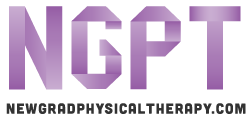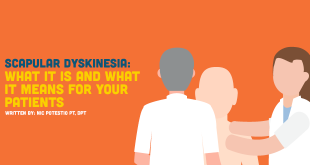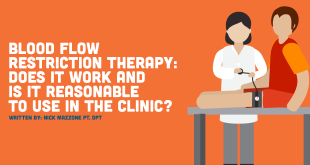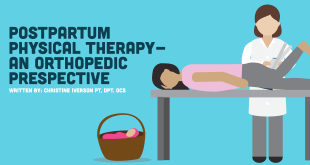Trigger points: the great controversy

Odds are, you may be experiencing a trigger point as you read this, or have experienced one at some point in your life. But what exactly are trigger points? Like many things in life, a myofascial trigger point is a complex phenomenon that is undeniably concrete, but still difficult to explain.
Experts, researchers, and self-proclaimed philosophical thinkers have questioned the biology and even existence of trigger points, as well as the best treatment for this conundrum. Despite the arguments and debates, it continues to remain evident that a painful problem exists. “Trigger point” may not be the formal medical description for this condition, but the word does appear to trigger controversy. Nevertheless, for the sake of discussion, I will be using the phrase “trigger point” as a label for this unexplained experience.
Until recently, I have been naive to the heated debate surrounding trigger points. I will give my humble opinion on the drama in the last section of this article, but first I will give more information about myofascial trigger points.
What is a trigger point?
A trigger point is a sensitive spot of irritated muscle that produces a sensation of perceived discomfort. These tender points of muscle are a common cause of muscle pain that complicate daily life.
The pioneers of trigger point research, Dr. Janet Travell, M.D. and Dr. David Simmons, M.D., define a trigger point as “a hyperirritable spot, usually within a taut band of skeletal muscle or in the muscle’s fascia, that is painful on compression and that can give rise to characteristic referred pain, tenderness, and autonomic phenomena.”
Fascia

Everything in the body is interconnected by way of connective tissue called fascia. Fascial tissue envelops and connects every structure in the body, including muscles, organs, nerves, and blood vessels.
Fascia is an important part of the discussion surrounding muscle pain and trigger points. This tissue surrounds each muscle and may be influenced, or have an influence on, trigger points and perceived pain.
Fascia that envelops muscle is called myofascia. Hence the names myofascial release and myofascial pain being related to trigger points.
myo = muscles
fascia = the connective tissue that envelops the muscle
Muscle pain
Muscle pain is important because most of the medical complaints treated by physical therapists consist of some variation of pain, with myofascial pain being a major culprit. The most common areas of myofascial pain are found in the neck, shoulders, and upper back. Additionally, myofascial restrictions can hide themselves in the pec minor, hip flexors, quads, lower back, and feet. Research has also shown that trigger points can contribute to headaches.
A potential cause of trigger points is joint instability. When joints are hypermobile, the surrounding muscles have to work hard to keep that joint in place. This results in overuse and fatigue, making it easy for trigger points to develop.
Muscle overuse
Trigger points are not only an isolated issue. They can also exacerbate complicated health issues and are often closely related to changes in posture and muscle activation patterns.
Lower back pain from a herniated disc results in postural compensations that may give rise to trigger points. An amputation due to trauma or diabetes will lead to altered biomechanics from a compensatory gait pattern; the new gait pattern will cause overuse of muscles, which can give rise to trigger points. A trigger point may occur in a similar way in patients who have suffered a stroke or a spinal cord injury, due to resultant postural changes.
The research study, Etiology of Myofascial Trigger Points, supports the theory that trigger points are victims of muscle overuse. The authors concluded, “In spite of a lack of well-designed studies, the best available evidence supports that trigger points develop after muscle overuse…whether overuse mechanisms are the crucial initiating factor or persistent nociceptive input remains a point of debate and further study.”
Referred pain
Myofascial pain is further complicated by its resulting pain patterns. Not only can myofascial trigger points obscure an underlying health issue, they may also mimic other referred pain patterns.
Referred pain is often a symptom of trigger points. Referred pain is the discomfort that radiates from a lesion and causes perceived pain at another point in the body.
The authors of Myofascial Pain Syndromes–The Great Mimicker caution us against ignoring the true pathology of a trigger point: “An understanding of these pain problems, produced from trigger points in muscles and ligaments, is important in order to differentiate myofascial pain syndromes from more dangerous diseases and to avoid unnecessary and expensive diagnostic procedures.”
Tensegrity
Trigger points are often referred to as shortened or tight muscles. However, it can be argued that trigger points are not necessarily short, but are a product of muscles being fixated to a direction.
Since the body is interconnected, the structures that are embedded in fascia have influence on other structures. When a muscle develops a form of dysfunction, like a trigger point, other structures in the body are susceptible to change as well. This phenomenon of stress on one point of the muscular system affecting another is called tensegrity.
Tensegrity may explain abnormalities and biomechanical faults, like upper crossed syndrome, flat feet (pes planus), and piriformis syndrome, but whether a trigger point is the chicken or the egg is still up for debate. Nevertheless, the theory of tensegrity may explain the origins of muscle pain that eventually drives patients to physical therapy.
Neurophysiological effects
There is plenty of evidence stating that we cannot manually deform the muscle to make change. So then why do patients report feeling significantly better after “myofascial release” of “trigger points”? The latest theory is that there are neurophysiological effects taking place.
It has been theorized that the neurological effects of trigger points are due to a combined influence of the central and peripheral nervous systems. Muscles are innervated by mechanoreceptors that respond to manual pressure and decrease the sympathetic tone in the muscle.
It is also possible that the gate control theory is at work here. Afferent neurons receive information from external stimuli, which then relay that information to the brain. Since only so much information can run through neurons at one time, the newly received information from manual therapy may be another cause of decreased pain.
A proper understanding of trigger points and the influence of manual therapy is necessary for honest patient education. This knowledge will also allow us to become more effective practitioners.
Current research
Solid information is hard to come by with trigger points. The science has missing pieces, is not fully understood, or has been thrown out all together. Yet muscle pain still exists.
Muscle pain is often overlooked by the general physician, but muscles make up a substantial portion of our bodies. Beyond normal muscle tissue, muscle is also found in the heart, digestive system, and blood vessels. Even though muscle is everywhere, it is still arguably neglected by medicine.
Muscle pain is not as serious as other complications, so the neglect is understandable. However, as physical therapists, muscle pain is our expertise. Because of the weak science surrounding trigger points, myofascial pain is often mentioned as a last possible diagnosis. However, its presence is all too real to discount in our patients.
For those looking for evidence-based and science-based research on trigger point therapy/myofasicial release, here are a few resources:
- Systematic Review of Self Myofasical Release. The results show that self myofascial release (SMR) increases muscle flexibility and reduces soreness without impeding athletic performance. The study concludes that “SMR appears to have a range of potentially valuable effects for both athletes and the general population, including increasing flexibility and enhancing recovery.”
- Acute Effects Of Self-Myofascial Release Using A Foam Roller On Arterial Function. “These results indicate that SMR using a foam roller reduces arterial stiffness and improves vascular endothelial function.” This may reduce oxygen deprivation in a trigger point, a potential cause of pain.
- Literature Review: Effects of Myofascial Release on Range of Motion and Athletic Performance. “Overall, myofascial release techniques show an ability to improve range of motion and athletic performance, depending on the type of range of motion and mode of athletic performance. Further research needs to be conducted to find which muscle groups and joints benefit the most from myofascial release.”
- Effects of Myofascial Release Techniques on Pain, Physical Function, and Postural Stability in Patients with Fibromyalgia: A Randomized Controlled Trial. “The results suggest that myofascial release techniques can be a complementary therapy for pain symptoms, physical function, and clinical severity, but do not improve postural stability in patients with fibromyalgia syndrome.” According to this study, unless a person has fibromyalgia, myofascial release will be beneficial.
- Myofascial Release as a Treatment for Orthopaedic Conditions: A Systematic Review. “The quality of studies was mixed, ranging from higher-quality experimental to lower-quality case studies. Overall, the studies had positive outcomes with myofascial release, but because of the low quality, few conclusions could be drawn. The studies in this review may serve as a good foundation for future randomized controlled trials.”
- An Acute Bout of Self-Myofascial Release Increases Range of Motion Without a Subsequent Decrease in Muscle Activation or Force. “An acute bout of SMR of the quadriceps was an effective treatment to acutely enhance knee joint ROM without a concomitant deficit in muscle performance.”
- Etiology of Myofascial Trigger Points.”In spite of a lack of well-designed studies, the best available evidence supports that trigger points develop after muscle overuse…Whether overuse mechanisms are the crucial initiating factor or persistent nociceptive input remains a point of debate and further study.”
Within just this small pocket of research, there is a wealth of information both supporting and negating the effects of myofascial therapy. If you need more research, feel free to search the reference section of any of these cited works and find the articles that best suit your argument. The research I list here is biased towards the benefits of myofascial release therapy for the betterment of the most important part of physical therapy: the patient.
It is understood that limitations and interpreting statistics should be taken into account to determine how significant the research really is. However, for the sake of this article, I will not delve to that depth.
In this information age, we can all find studies or opinions to support or counter any argument made. This makes it difficult for young clinicians to discern best practices. However, once there is a substantial amount of solid and agreeable evidence, then it is time to adapt our thinking and practice accordingly.
Trigger point therapy should not be the end all be all for treatment and I highly doubt that any physical therapists believe that is the case. Manual therapy is just one of many tools we can use to help our patients.
The patient experience
I enjoy using the scientific method to question everything and I do not claim to have the all the answers. I can only take what I have learned so far and apply it with logical thinking. It is my hope that is allows me to make the best decisions for my patients.
We may all hold conformation bias towards one side or the other on this topic. There is research supporting and refuting the existence of trigger points. However, most research will argue that this is an ongoing investigation with the need for more evidence.
I am solely writing from the perspective of a person who entered the field of physical therapy, not for his own ego to prove others wrong, but for the benefit of the patients. I attempt to use my knowledge and passion to impact lives in a positive way, even if that does happen to include “releasing trigger points” alongside other hard evidence-based treatment that will benefit patients.
My concern is not the research. Time and money will bring about the best evidence-based and science-based practices. Without current knowledge of trigger points, we are not defying the hippocratic oath of first doing no harm. In fact, we have the potential to dampen the opioid epidemic with our conservative, pain relieving interventions.
In his book, The Healers Calling, Daniel Sulmasy implies that touch is a deep human need: “As physical therapists, patients are coming to us from a place of vulnerability and pain. Therefore, relief from pain could be argued as our ethical obligation.”
Manual therapy techniques, coupled with other therapies, are making a difference, regardless of our depth of understanding of trigger points. Patients want and care about results. In the real world, patients want you to acknowledge their chief complaint so that they can begin to feel and function better.
Limitations of science
So why go to school and be trained in science and evidence based practice? Because that is important too. However, there is much more we need to learn after school.
School’s primary goal is to instill competence in students. Our professors provide us with skills that ensure we do not harm our patients. We are also provided with the tools to pass the board exam – our gateway to the real world. However, learning does not stop at graduation.
School, first and foremost, teaches us how to discern knowledge for ourselves. We become educated through school, but at times the education seems to take over common sense. We seem to forget why we do things and who we are doing them for.
For the most part, no patient is going to come to you and ask you about the science. Patients will ask you to make them feel better. If physical therapists can offer clients something that helps them function throughout the day, but hasn’t been proven in a randomized control trial, is that the worst thing in the world?
In the age of evidence/science-based research, some are critiquing scientific research all together saying it is losing credibility. It is often purported that research results are biased towards whoever is funding the research. However, is it stepping on too many toes to say the patient may come before the research? Even orthopedic textbooks, like Orthopedic Manual Therapy – An Evidence Based Approach, use the patient response model as the primary approach to therapy.
There are many concepts that have yet to be fully explained by science. There are also things we use everyday in society that an average person couldn’t explain the inner workings of. Yet they still use it. Why? Because it serves a purpose.
Identification and treatment of trigger points
Now that we have discussed the theories behind trigger points, it is important that we understand their clinical presentation too. There are several key items that will let you know your patient is suffering from a trigger point. David G Simons M.D. explains 5 characteristics of a trigger point:
- The initial onset of pain and the recurrence of pain are of muscular origin. (Simons 1987)
- Reproducible spot tenderness occurs in the muscle at the site of the trigger point pain. (Simons 1987)
- Pain is referred locally or at a distance on mechanical stimulation of the trigger point. This referred pain and tenderness projects in a pattern characteristic of that muscle and reproduces part of the patient’s complaint. Patterns of referred pain are frequently different from those expected on the basis of nerve root innervation. (Travell and Rinzler, 1952; Travell, 1976)
- There is palpable hardening of a taut band of muscle fibers passing through the tender spot in a shortened muscle. (Simons, 1976)
- A local twitch response of the taut muscle occurs when the trigger point is stimulated. (Simons 1987)
Patients have likely been living with this pain for weeks, months, or years, so it is important to remind them that they will not be magically healed in 10 minutes. Self massage or self myofacial release are good ways to relieve pain caused by trigger points. However, if self release techniques do not work, multiple sessions of therapy, coupled with corrective exercises are warranted to completely fix the problem and avoid relapse. It is best to seek a professional, like a physical therapist, who is trained in myofascial release techniques.
To learn myofascial techniques, you will need a few items to get started, like a Theracane and a myofascial release ball (lacrosse balls and tennis balls work too). You can also watch my video to learn a view hacks when performing self myofascial release.
Closing thoughts
At the end of the day, we are all in the same profession with many problems to solve, like direct access, marketing, insurance rates, and legal scope of practice battles. Therefore, how to label trigger points shouldn’t be at the top of our concerns. With that said, we need to have each other’s backs, instead of tearing each other down. I’d rather have you on my team than my ego or opinions.
References
Aguilar, Naudi. “Functional Patterns Functional Training Evolved.” www.functionalpatterns.com. N.p., 2017. Web. 7 Mar. 2017.
Beardsley, Chris and Jakob Škarabot. “Effects Of Self-Myofascial Release: A Systematic Review”. Journal of Bodywork and Movement Therapies 19.4 (2015): 747-758. Web. 6 Mar. 2017.
“Beating Back Pain – Consumer Reports Video”. Consumerreports.org. N.p., 2017. Web. 7 Mar. 2017.
Benz, Laurence N. and Timothy W. Flynn. “Placebo, Nocebo, And Expectations: Leveraging Positive Outcomes”. Journal of Orthopaedic & Sports Physical Therapy 43.7 (2013): 439-441. Web. 4 Mar. 2017.
Bron, Carel and Jan D. Dommerholt. “Etiology Of Myofascial Trigger Points”. Current Pain and Headache Reports 16.5 (2012): 439-444. Web. 3 Mar. 2017.
Coleman, Casey. “10 Things Physical Therapy School Will Not Teach You”. NewGradPhysicalTherapy.com. N.p., 2017. Web. 7 Mar. 2017.
Coleman, Casey. “Trigger Point Hacks”. YouTube. N.p., 2017. Web. 7 Mar. 2017.
Calandre EP, Hidalgo J, Garcia-Leiva JM, Rico-Villademoros F, Delgado-Rodriguez A. Myofascial trigger points in cluster headache patients: a case series. Head & Face Medicine. 2008 Dec 30;4(32):32. PubMed #19116034. PainSci #55349.
Castro-Sanchez, A. M. et al. “Effects Of Myofascial Release Techniques On Pain, Physical Function, And Postural Stability In Patients With Fibromyalgia: A Randomized Controlled Trial”. Clinical Rehabilitation 25.9 (2011): 800-813. Web. 3 Mar. 2017.
Chaudhry H, Schleip R, Ji Z, Bukiet B, Maney M, Findley T. Three-dimensional mathematical model for deformation of human fasciae in manual therapy. J Am Osteopath Assoc. 2008 Aug;108(8):379–90. PubMed #18723456.
Cook, Chad. Orthopedic Manual Therapy. 1st ed. Upper Saddle River, N.J.: Pearson Education, 2012. Print.
Deardorff, William W. “Modern Ideas: The Gate Control Theory Of Chronic Pain”. Spine-health. N.p., 2017. Web. 7 Mar. 2017.http://www.spine-health.com/conditions/chronic-pain/modern-ideas-gate-control-theory-chronic-pain.
Dommerholt, Jan and David G. Simons. “Myofascial Pain Syndrome—Trigger Points”. Journal of Musculoskeletal Pain 16.4 (2008): 333-338. Web.
Fernández-de-Las-Peñas C, Simons D, Cuadrado ML, Pareja J. The role of myofascial trigger points in musculoskeletal pain syndromes of the head and neck. Current Pain & Headache Reports. 2007 Oct;11(5):365–72. PubMed #17894927.
Flax, Herman J. “Myofascial pain syndromes — the great mimicker states” Journal of Musculoskeletal Pain 3.1 (1995): 125-128. Web.
Ingraham, Paul. “Trigger Point Chemistry Is Toxic?”. www.PainScience.com. N.p., 2017. Web. 7 Mar. 2017.
Kristin McKenney, Amanda Sinclair Elder, Craig Elder, and Andrea Hutchins (2013) Myofascial Release as a Treatment for Orthopaedic Conditions: A Systematic Review. Journal of Athletic Training: Jul/Aug 2013, Vol. 48, No. 4, pp. 522-527.
MacDonald, Graham Z. et al. “An Acute Bout Of Self-Myofascial Release Increases Range Of Motion Without A Subsequent Decrease In Muscle Activation Or Force”. Journal of Strength and Conditioning Research 27.3 (2013): 812-821. Web. 3 Mar. 2017.
Myers, Tom. “Can Fascia Stretch? – News”. Anatomy Trains. N.p., 2017. Web. 7 Mar. 2017.
Myers, Thomas. “Fascia And Extra-Cellular Matrix – Stability And Movement”. Anatomy Trains. N.p., 2017. Web. 7 Mar. 2017.
Myers, Thomas. “Tension And Integrity – Tensegrity A Balance Of Tension Members”. Anatomy Trains. N.p., 2017. Web. 7 Mar. 2017.
Okamoto, Takanobu, Mitsuhiko Masuhara, and Komei Ikuta. “Acute Effects Of Self-Myofascial Release Using A Foam Roller On Arterial Function”. Journal of Strength and Conditioning Research 28.1 (2014): 69-73. Web. 3 Mar. 2017.
Quintner JL, Bove GM, Cohen ML. A critical evaluation of the trigger point phenomenon. Rheumatology (Oxford). 2015 Mar;54(3):392–9. PubMed #25477053.
Religioso III, Erson. “Want To Deform Fascia > 1%? Are You Super Human?”. Themanualtherapist.com. N.p., 2017. Web. 7 Mar. 2017.
Schleip, Robert. “Fascial Plasticity – A New Neurobiological Explanation: Part 1”. Journal of Bodywork and Movement Therapies 7.1 (2003): 11-19. Web. 3 Mar. 2017.
Sulmasy, Daniel P. The Healer’s Calling. 1st ed. New York: Paulist Press, 1997. Print.
Travell JG and Simons DG: “Myofascial Pain and Dysfunction: The Trigger Point Manual,” Williams & Wilkins, Baltimore, 1983, pg. 31.
WALIA, ARJUN. ““Peer Reviewed:” Science Losing Credibility As Large Amounts Of Research Shown To Be False”. Collective Evolution. N.p., 2017. Web. 8 Mar. 2017.
Wellens, B.Sc., pht, RCAMPT., Frédéric. “The Traditional Mechanistic Paradigm In The Teaching And Practice Of Manual Therapy : Time For A Reality Check.”. http://www.physioaxis.ca/. N.p., 2017. Web. 7 Mar. 2017.
Yuen, Cameron. “Does PT Use Science Based Medicine Or Tooth Fairy Science? – Newgradphysicaltherapy.Com”. NewGradPhysicalTherapy.com. N.p., 2017. Web. 7 Mar. 2017.
Zazac, Alex, “Literature Review: Effects of Myofascial Release on Range of Motion and Athletic Performance” (2015). Honors Research Projects. Paper 67.
Images
https://hildakweisburg.files.wordpress.com/2016/10/controversy.jpg
http://fascialrestructuringtherapy.com/uploads/3/4/4/1/34415941/9508057.jpg
http://www.souzing.com/wp-content/uploads/2015/04/Dollarphotoclub_61572726.jpg
http://www.anatomytrains.com/wp-content/uploads/2013/06/tensegrity5.png
https://www.anatomytrains.com/wp-content/uploads/2014/02/gammafiber20-640×417.png
http://www.cmm.ki.se/wp-content/uploads/2013/12/research-icon1.jpg
http://www.chisite.org/wp-content/uploads/2015/10/1013.jpg
Attachments
Preview YouTube video Trigger Point HacksImages
 NewGradPhysicalTherapy.com The Largest Online Resource For New Grad Physical Therapists
NewGradPhysicalTherapy.com The Largest Online Resource For New Grad Physical Therapists











